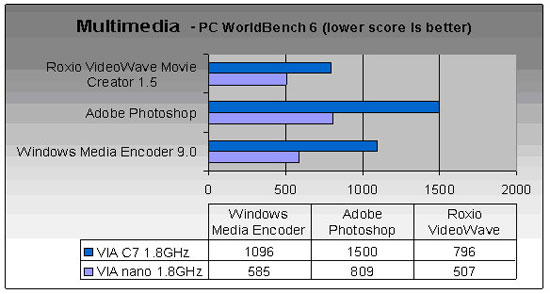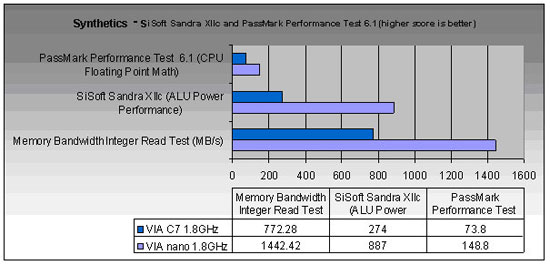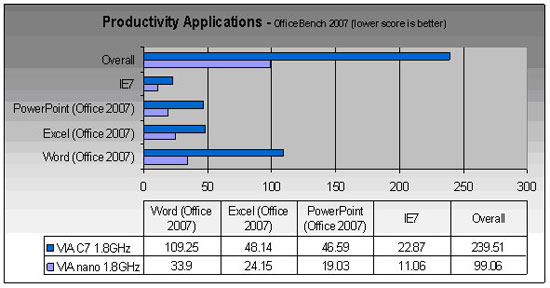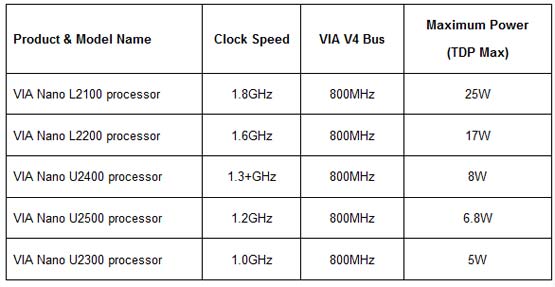Centaur Technologies Tour – Making The Via Nano CPU
VIA Nano Benchmarks

Not all VIA Nano processors will designed for use with a socket though as a number of mobile devices have the CPU soldered directly to the motherboard. In this package the chips’ BGA-style package measures only 11mm by 11mm and a special motherboard is needed for testing. Pictured above the a VIA based motherboard with a special CPU socket to use the pinless processor. It’s hard to tell in the above picture, but the processor is actually in the socket!

To see how tiny one of these actually are, I had Glenn Henry himself do some hand modeling for Legit Reviews! So, how does the Via Nano perform? Let’s take a look at the benchmarks Centaur has provided the media.
The Centaur Benchmarks:




Keeping in mind that the Nano has pin-to-pin compatibility with current VIA C7 processors the benchmarks are impressive. Since Nano is pin-to-pin compatible it also enables a smooth transition for OEMs and mainboard vendors, enabling them to offer a wider range of products for different markets with a single board or system design. The benchmarks we really want to see is how the VIA Nano compares to the Intel Atom, but those will have to wait till real product hits the market. The benchmarks that Centaur used showed that the Nano was nearly twice as fast as the C7, which says a ton since both are single core processors. The VIA Nano has an impressive 1MB of L1 cache, which is likely one of the big reasons the performance jumped so much. The Intel Atom uses 512KB, so the VIA Nano should be able to give the Intel Atom a run for its money when it comes to both performance and low power consumption!

Initially the processor will be launched in two skus, the VIA Nano L-series processors for mainstream desktop and mobile PC systems and the ultra low voltage U-series for small form factor desktop and ultra mobile devices such as mini-notes. Centaur has working 2.0GHz VIA Nano processors running in the labs, so later in the year expect a faster Nano (although it will consume more power). Centaur has a serious X86 processor here and it will be interesting to see how the industry reacts to it. HP has already taken note of it and has a number of MID and mini-notebooks in the works. I look forward to the day that I have both an Intel Atom and VIA Nano platform on the test bench to give you the real numbers. I’d like to thank everyone at VIA and Centaur for letting me take a tour and seeing the inner workings in the middle of a product launch!

Comments are closed.